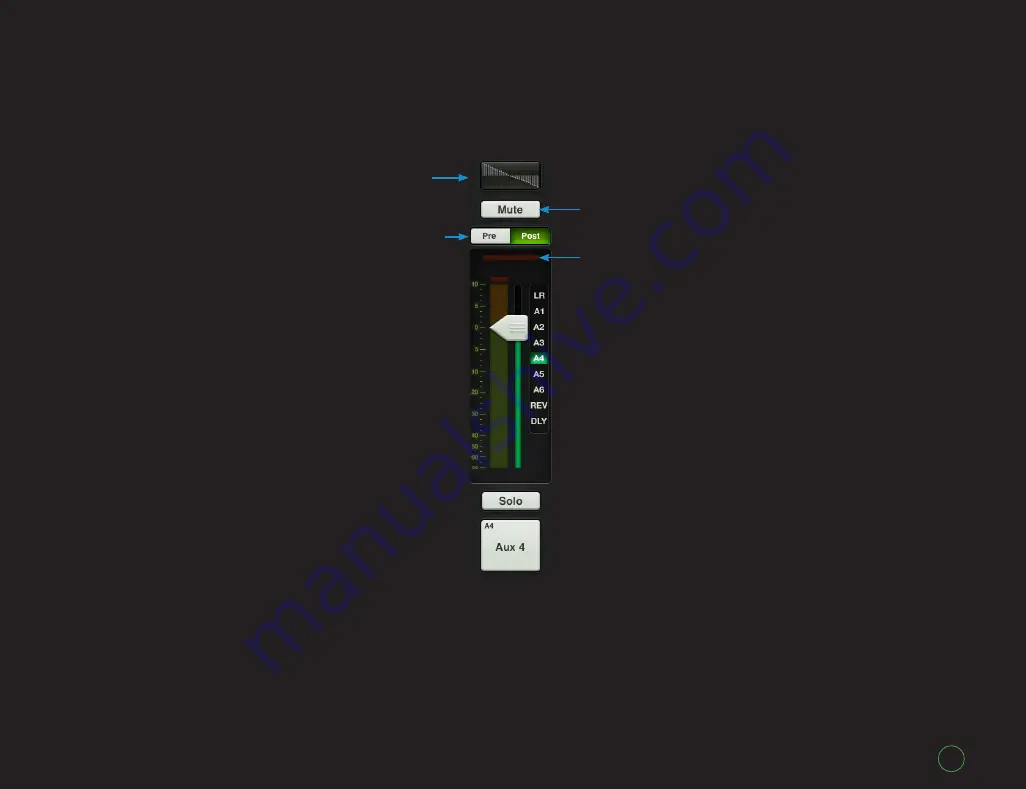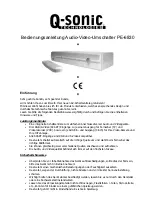
17
Master Fader: Graphic EQ
The master fader EQ displays the
current Graphic EQ settings.
When the Graphic EQ is
engaged, it will illuminate. See
Figure M for a Graphic EQ that is
on and Figure N for one that is not.
Tapping the master fader’s Graphic
EQ will change the view from the
Mixer View
to the
Channel View
for the currently selected output.
The Graphic EQ is available with all
selected outputs, except Reverb and
Delay. You will learn how to adjust
the Graphic EQ soon.
Master Fader: Mute
The master fader mute works
exactly like a channel mute, except
it mutes the output. Use it as a break
switch to mute monitors when the
band takes a break, for example.
The Mute button is available when
any output is selected, except LR. It
illuminates red when engaged.
Master Fader
Master Fader: Balance & Pre/Post
When LR is the selected output,
the Balance slider controls how
much of the output signal is sent
to the left versus the right outputs
[Figure M]. Touch and drag the slider
left or right to make adjustments.
Tapping the master fader’s Balance
ball twice will center it.
When an Aux Send is the selected
output, the Balance control is
replaced with a Pre / Post toggle
button [Figure N]. Here, the Aux Send
may be configured as pre–fader
[left] or post–fader [right]. Simply tap
which setting you prefer.
There is no Balance control or
Pre / Post button for Reverb or
Delay, so this spot will be blank
when Reverb or Delay is the
selected output.
Master Fader: Gain Reduction
Like channel faders, the
output Gain Reduction Meter
shows the amount of gain
reduction applied to the output
by the Compressor / Limiter. Output
channels do not contain gates.
You will learn how to adjust the
Output Compressor / Limiter soon.
Graphic
EQ
Figure N
Master Fader:
Auxes & FX
Pre / Post
Mute
Gain
Reduction
















































